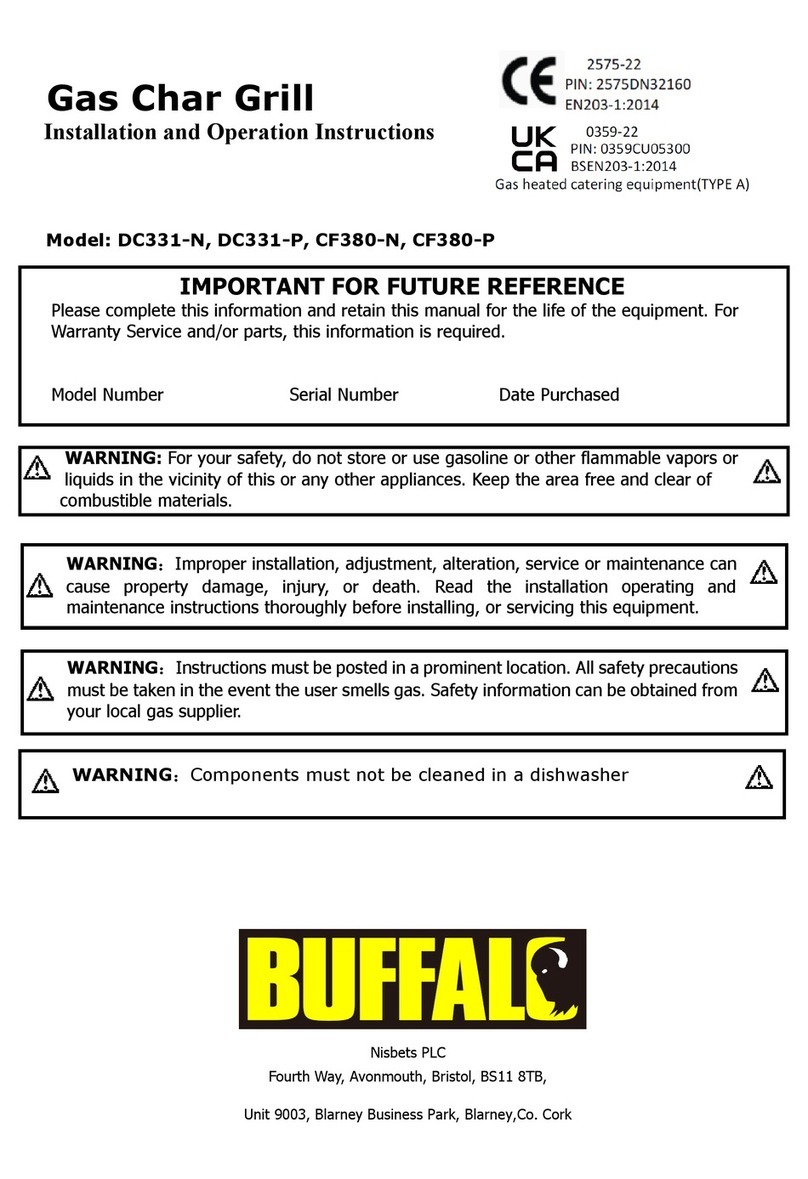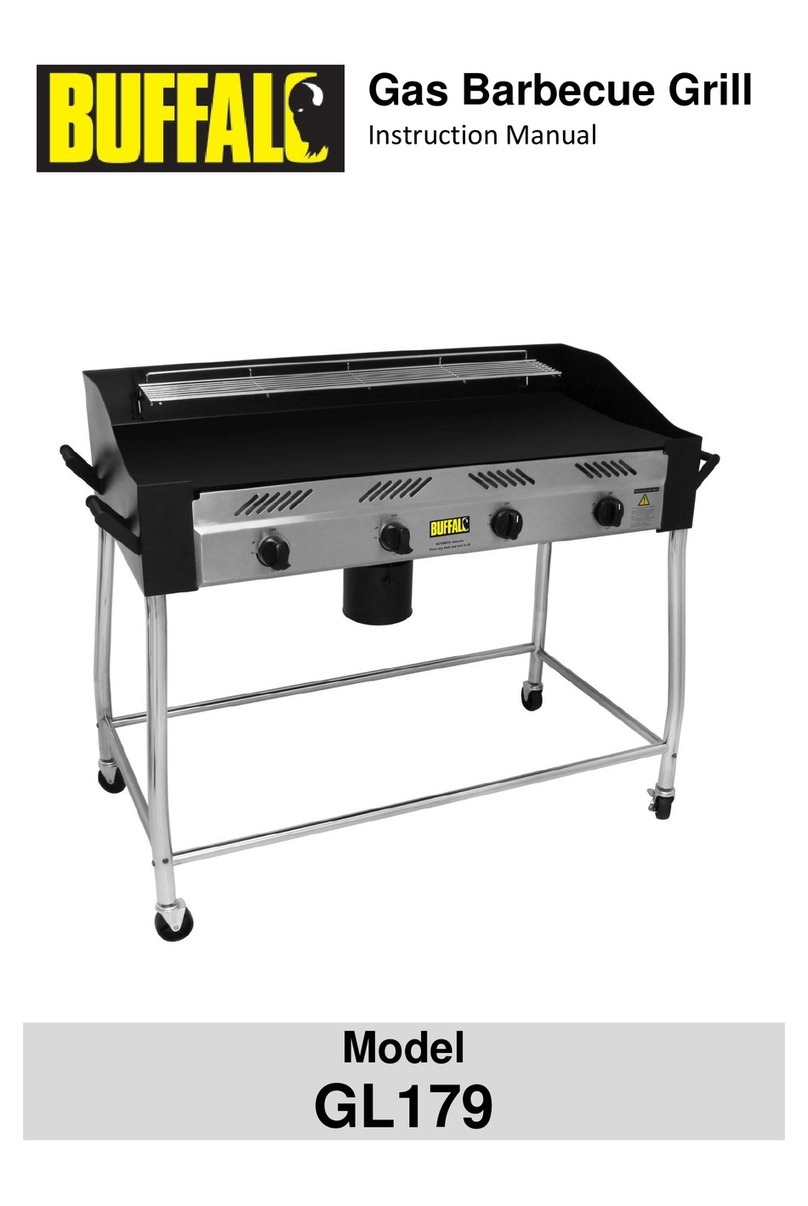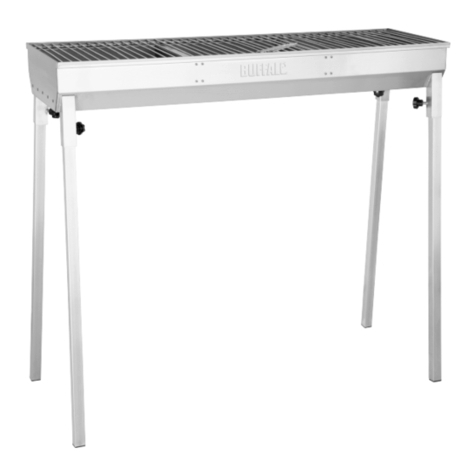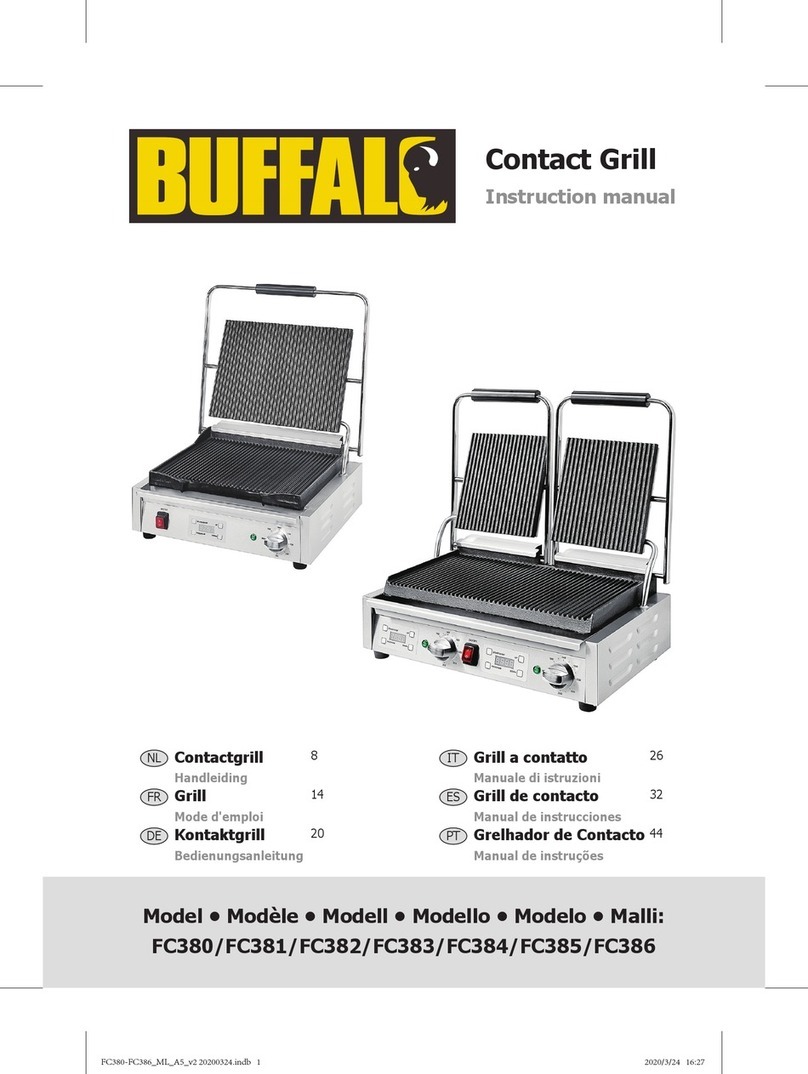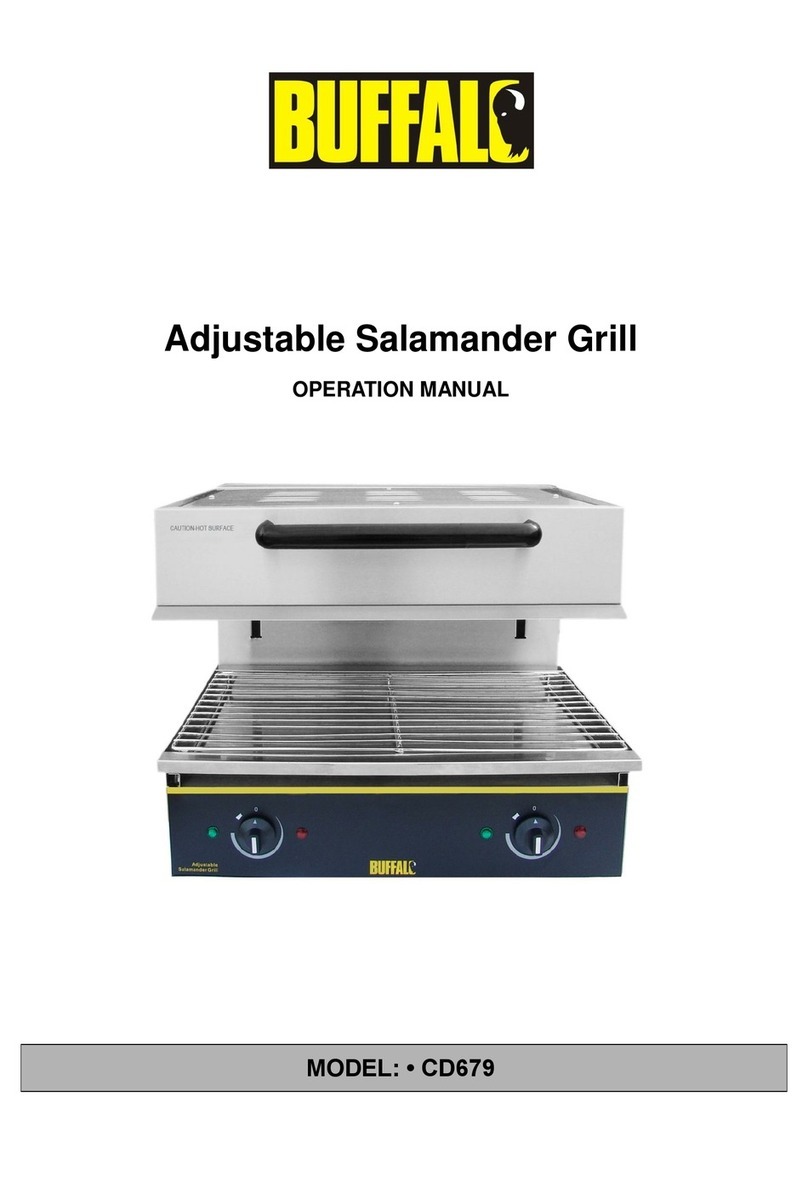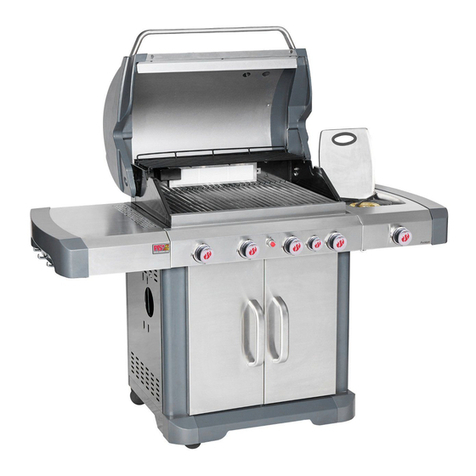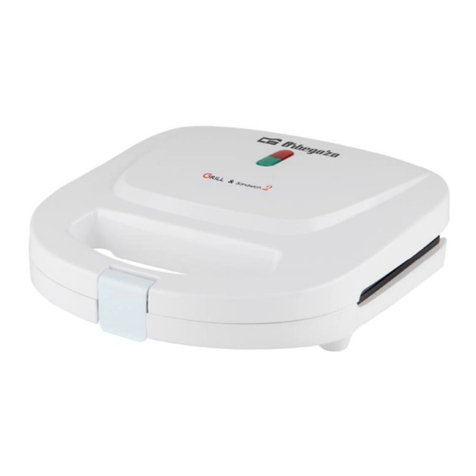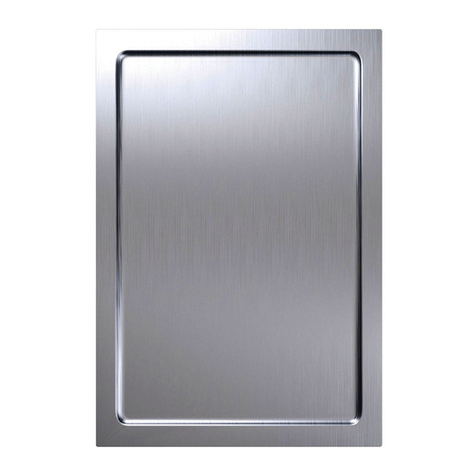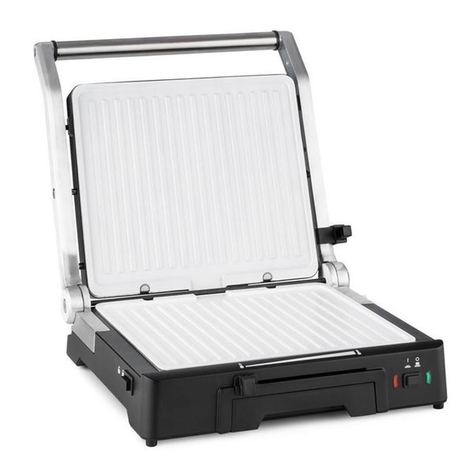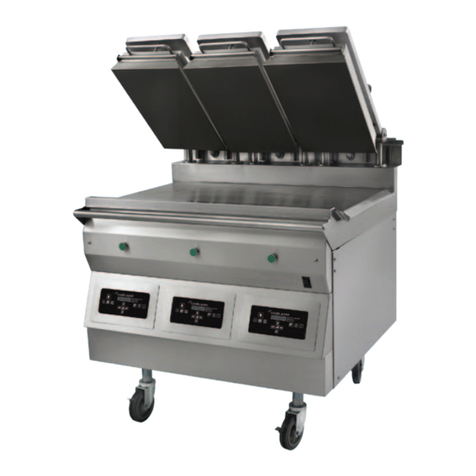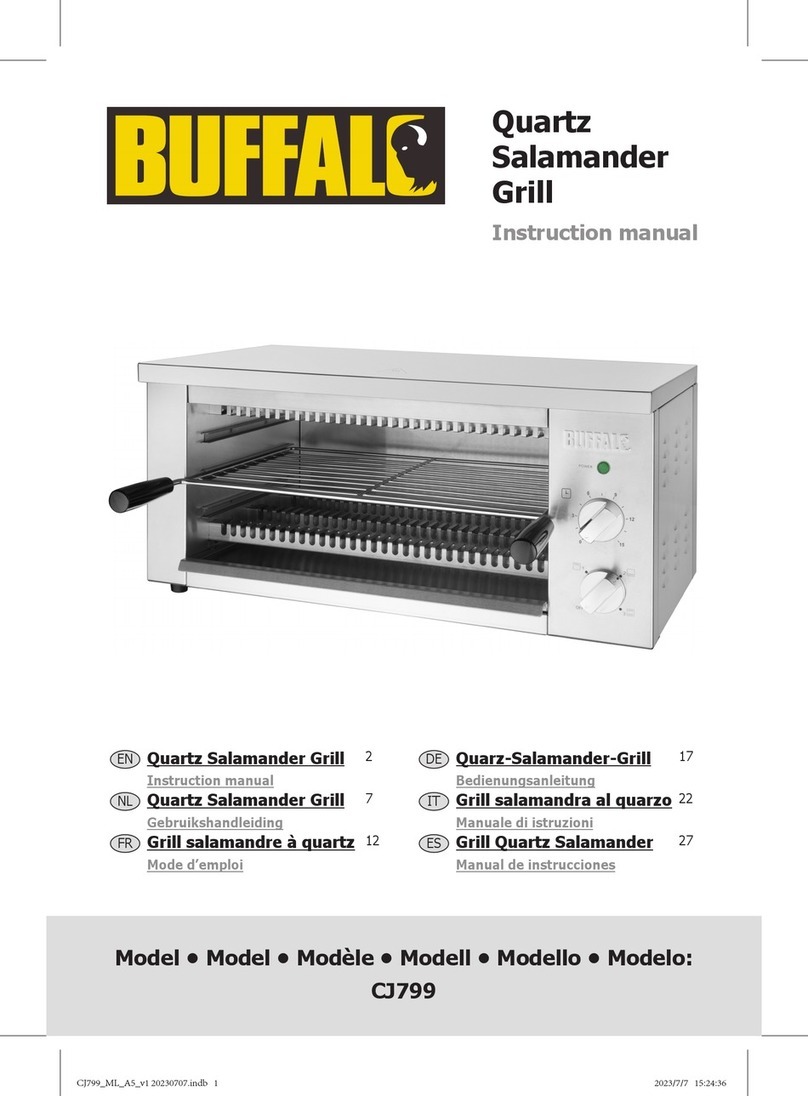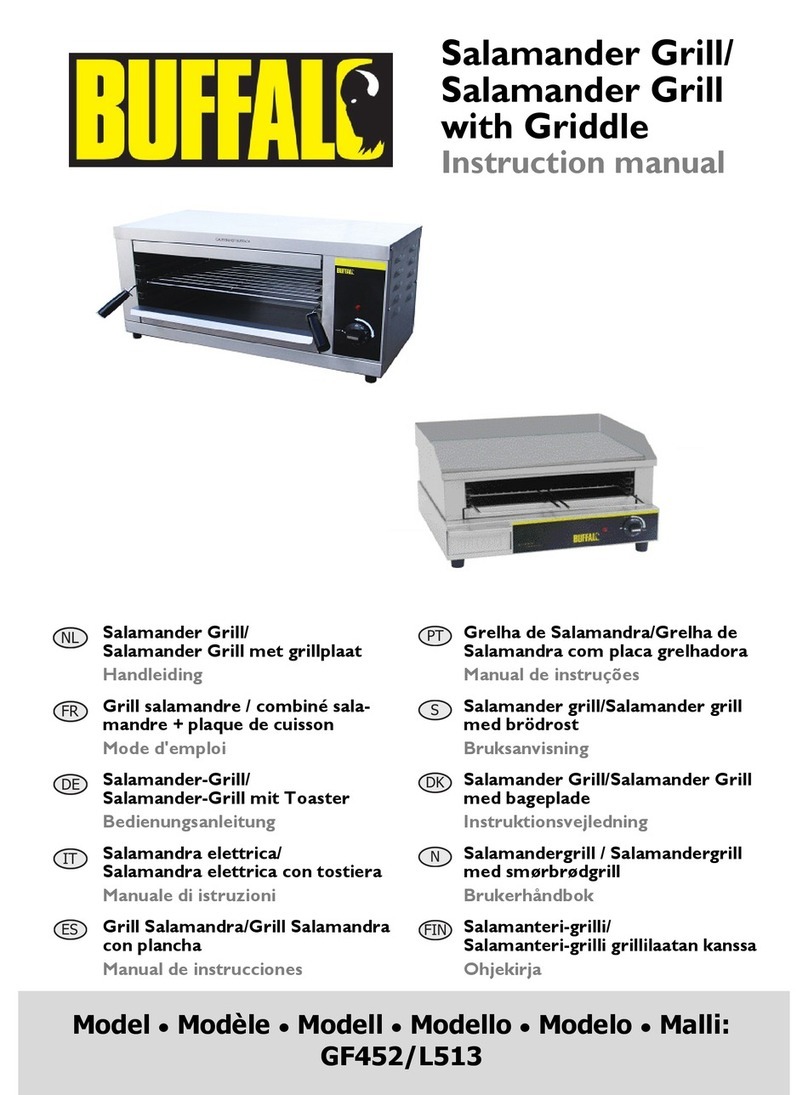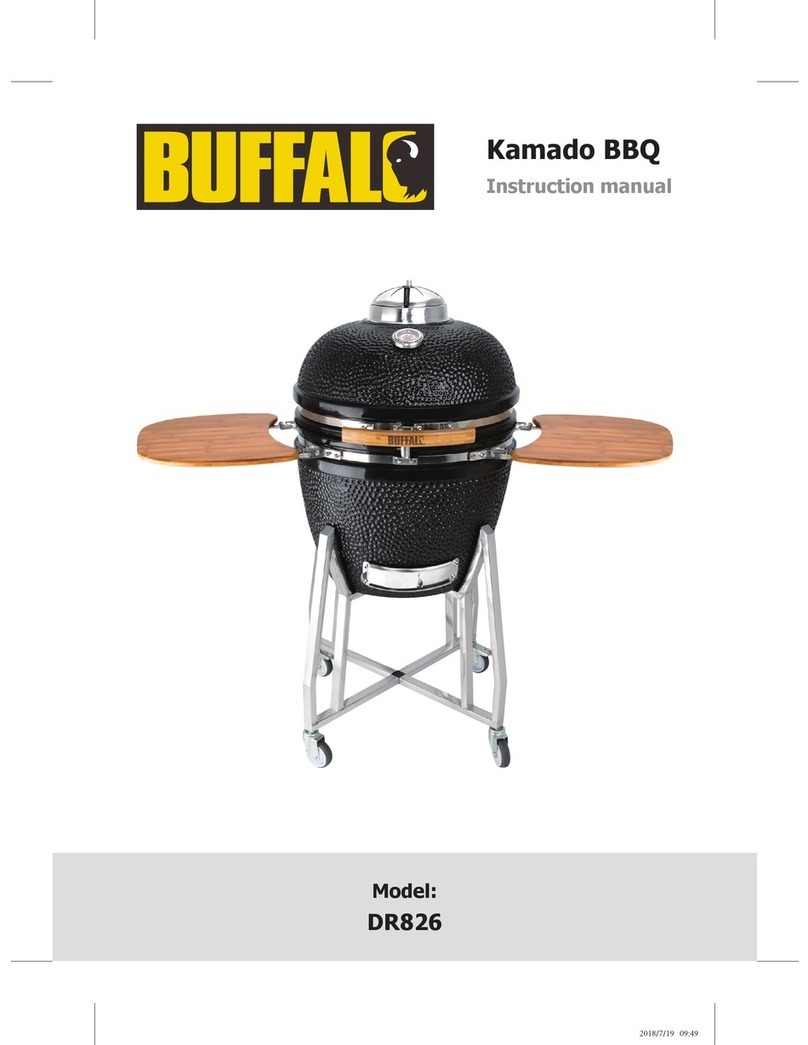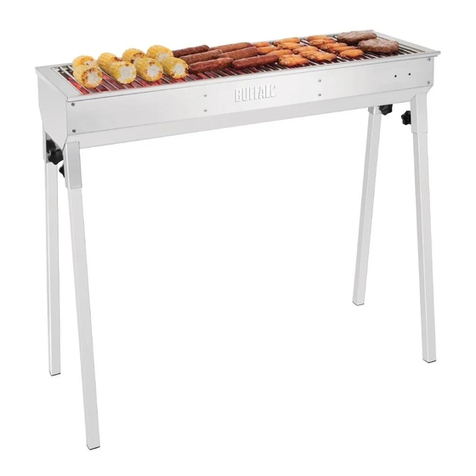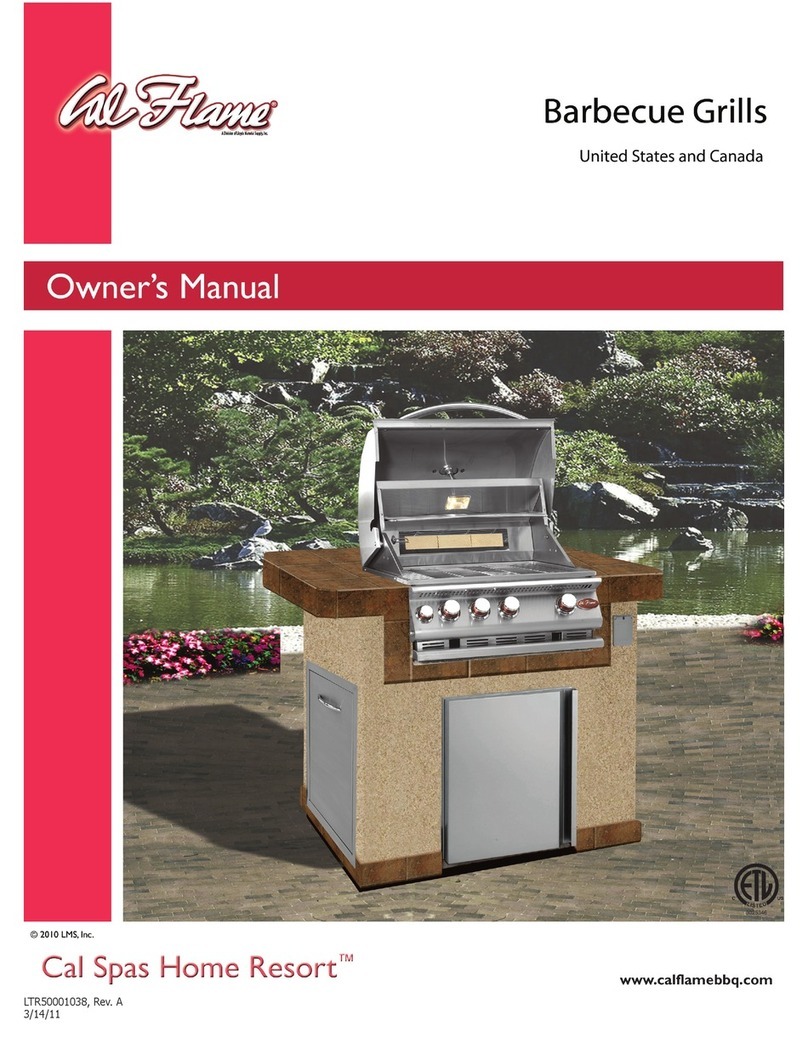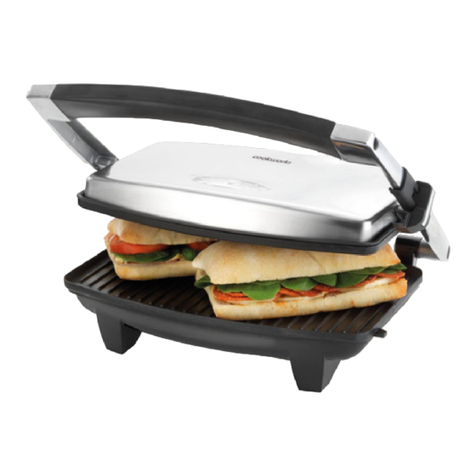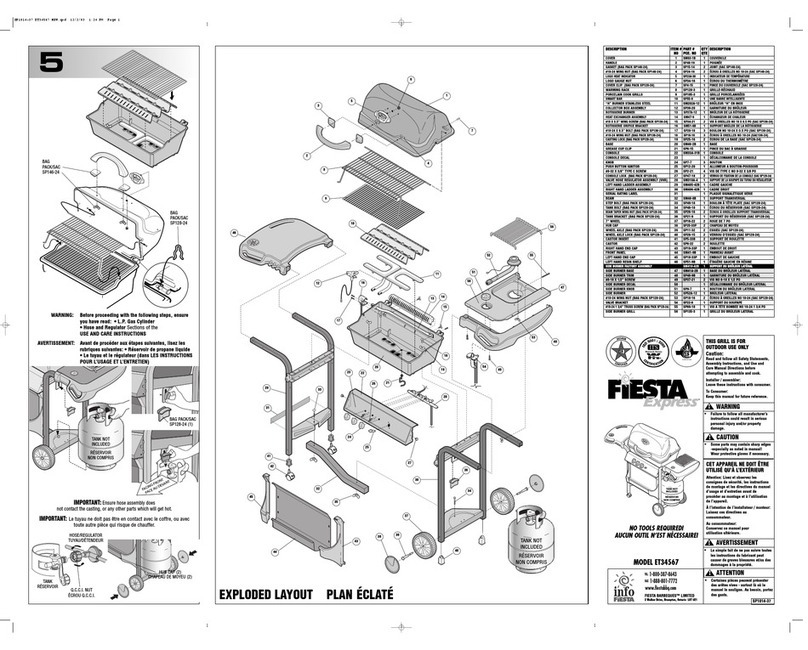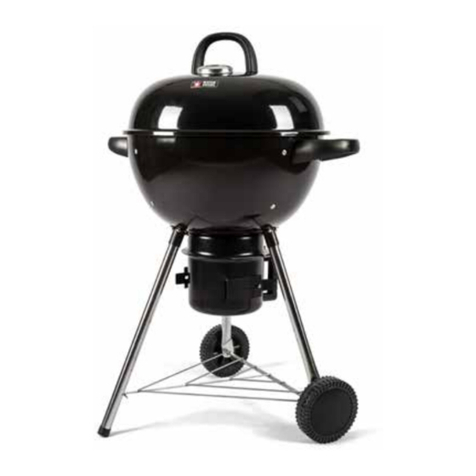
7
Disconnecting a gas cylinder
• Except for twin-cylinder installations with a
changeover valve, turn off the gas tap if fitted
to the appliance. Wait until the burner and pilot
light have gone out. For installations with a
changeover valve, it is only necessary to switch
off the empty cylinder.
• Replace the orange safety cap onto the empty
cylinder.
Operation
Seasoning the cooking surfaces
before first use
• Make sure the cooking surfaces are clean.
• Apply some oil to the cooking grids.
• Turn on all the knobs to the high position .
• Wait 5 minutes, switch off and carefully wipe
any excess oil from the grids.
Preparation before cooking
• Wipe clean the cooking grids. Let dry
thoroughly.
• To prevent foods from sticking to the cooking
surface, apply a light coat of cooking/vegetable
oil before each barbecuing session.
• Do not face directly over the appliance when
lighting.
Note: When cooking for the first
time, cooking surfaces colour
may change slightly. This is
normal and does no indicate any
defect.
Lighting the appliance
Open the lid of the barbecue
before attempting to light the
burners.
1. Ensure all control switches of the appliance are
at OFF position.
2. Turn on gas supply at the regulator or at the
gas cylinder valve.
3. Do not light side burner when the lid is closed.
4. To ignite a burner, push down and hold while
turning the burner switch to high position
(middle position) (Fig. 4). A click sound will be
heard and ignition will take place.
4
5. Follow same steps to light the other burners.
Warning: If ignition does not
occur in 5 seconds, turn the
burner switch off and wait
5 minutes. Then repeat the
lighting procedures.
Manual ignition
Should automatic ignition fails,
1. Remove the cooking grids and flame tamers.
2. Turn the burner switch anticlockwise to high
position (middle position) (Fig. 4).
3. Light with BBQ lighter at the distance of 5mm
to the burner fire hole.
4. Replace the cooking grids and flame tamers,
ensuring to wear heat-resistant gloves.
• If the lighting still fails
after 2 attempts, turn the
burner switch to OFF. Wait 5
minutes for the unburnt gas
to evaporate. Afterwards,
re-light.
• For any difficulty with
lighting, please consult your
dealer.
CF732_EN_A5_v1_20220406-for first PO only.indb 7CF732_EN_A5_v1_20220406-for first PO only.indb 7 2022/4/6 17:082022/4/6 17:08

